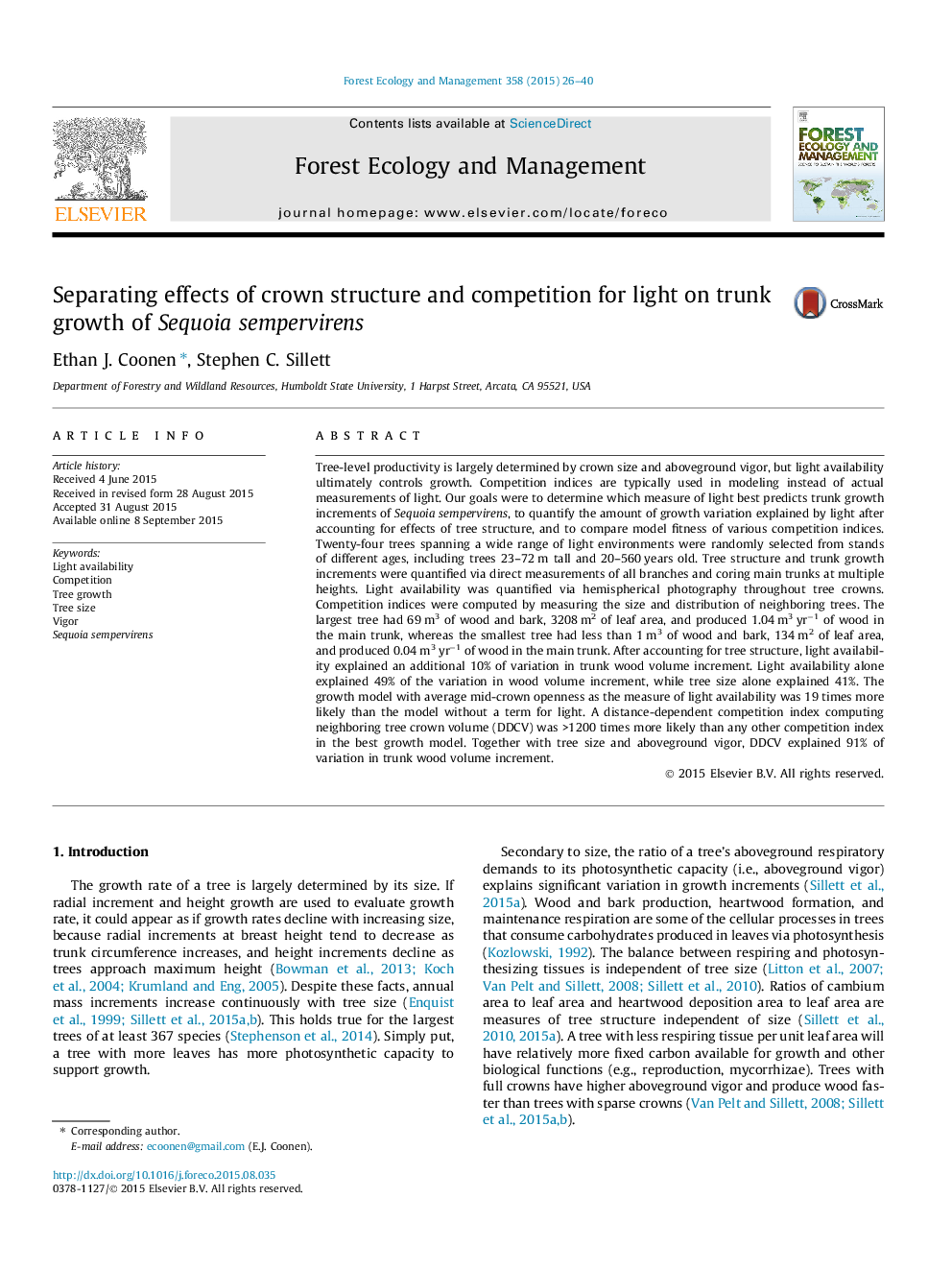| کد مقاله | کد نشریه | سال انتشار | مقاله انگلیسی | نسخه تمام متن |
|---|---|---|---|---|
| 86057 | 159163 | 2015 | 15 صفحه PDF | دانلود رایگان |

• Tree structure explains 79% of the variation in volume increment.
• Light availability explains an additional 10% of the variation in volume increment.
• Mid-crown openness is the best light metric for predicting volume increment.
• Radial increment is affected by aboveground vigor and light, but not by tree size.
• The best competition index for predicting volume increment is distance-dependent.
Tree-level productivity is largely determined by crown size and aboveground vigor, but light availability ultimately controls growth. Competition indices are typically used in modeling instead of actual measurements of light. Our goals were to determine which measure of light best predicts trunk growth increments of Sequoia sempervirens, to quantify the amount of growth variation explained by light after accounting for effects of tree structure, and to compare model fitness of various competition indices. Twenty-four trees spanning a wide range of light environments were randomly selected from stands of different ages, including trees 23–72 m tall and 20–560 years old. Tree structure and trunk growth increments were quantified via direct measurements of all branches and coring main trunks at multiple heights. Light availability was quantified via hemispherical photography throughout tree crowns. Competition indices were computed by measuring the size and distribution of neighboring trees. The largest tree had 69 m3 of wood and bark, 3208 m2 of leaf area, and produced 1.04 m3 yr−1 of wood in the main trunk, whereas the smallest tree had less than 1 m3 of wood and bark, 134 m2 of leaf area, and produced 0.04 m3 yr−1 of wood in the main trunk. After accounting for tree structure, light availability explained an additional 10% of variation in trunk wood volume increment. Light availability alone explained 49% of the variation in wood volume increment, while tree size alone explained 41%. The growth model with average mid-crown openness as the measure of light availability was 19 times more likely than the model without a term for light. A distance-dependent competition index computing neighboring tree crown volume (DDCV) was >1200 times more likely than any other competition index in the best growth model. Together with tree size and aboveground vigor, DDCV explained 91% of variation in trunk wood volume increment.
Journal: Forest Ecology and Management - Volume 358, 15 December 2015, Pages 26–40